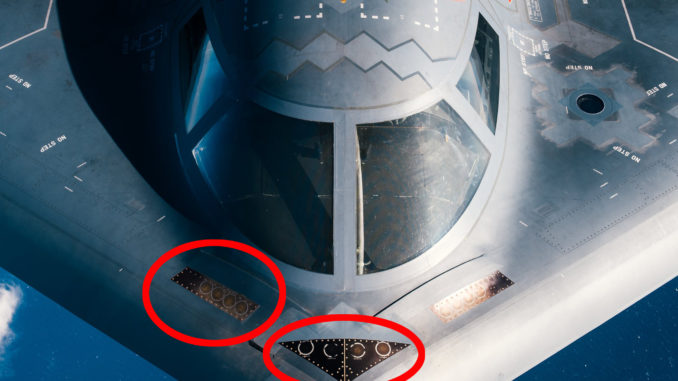
A close-up shot of the B-2 during AAR (Air to Air Refueling) shows the air data ports of the stealth bomber. (Original image: Staff Sgt. Jordan Castelan).
This shot exposes a few interesting details about some of the B-2’s sensors.
The U.S. Air Force has just released some interesting photographs of one of the B-2 Spirit bombers deployed to RAF Fairford, UK, as part of a Bomber Task Force as it refuels from a KC-135 Stratotanker over England, Aug. 29, 2019.
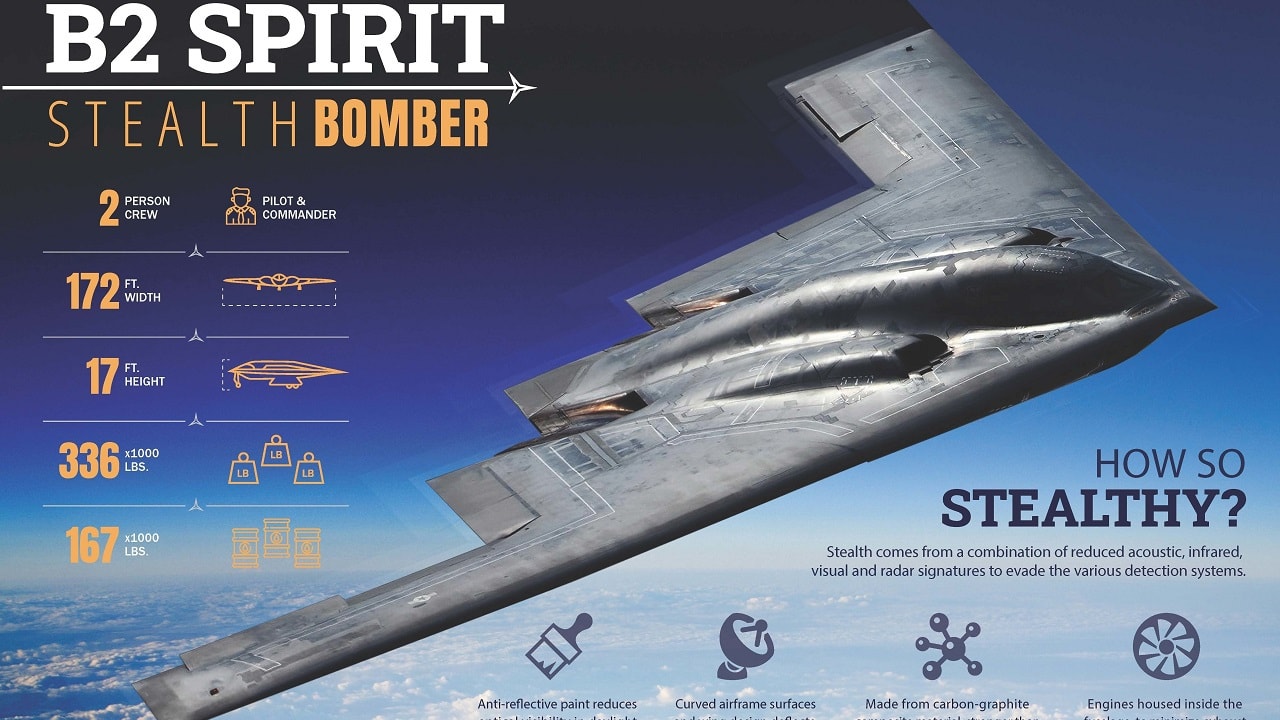
One of these photographs is worth a closer look as it shows an interesting sensor that equips every aircraft but whose shape and characteristics appear to be pretty peculiar to the Northrop Grumman’s strategic bomber.
Indeed, the ones highlighted in the photograph are the Pitot and Static ports, pressure transducers, used for dynamic and static pressure measurement. The ones in triangle have Warning Hot markings, making them the Pitot and the others have Do Not Plug making them the static ports, noticed some people who helped us gathering details about the ports (that are quite similar to air data ports used in modern airliners).
Every aircraft, even the smallest ones, require pitot probes and static ports to determine the plane’s airspeed, altitude and vertical speed.
Obviously, the B-2 carries no external/protruting pitot tubes (that would affect the aircraft’s Radar Cross Section – RCS – making it less stealthy); to check airspeed, the aircraft uses static ports set flush into the skin.
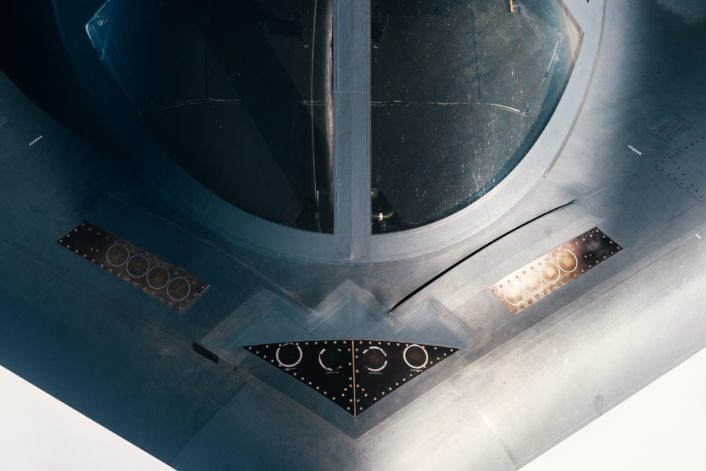
A U.S. Air Force 509th Bomb Wing B-2 Spirit refuels from a 351st Aerial Refueling Squadron KC-135 Stratotanker during the Bomber Task Force training exercise over England, Aug. 29, 2019. The training exercise improves bomber interoperability and contributes to the strengthening of enduring and strategic relationships throughout the theater. (U.S. Air Force photo by Staff Sgt. Jordan Castelan)
Interestingly, these ports were also involved in the loss of B-2 “Spirit of Kansas”, the most expensive crash in USAF history.
“The B-2 is a fly-by-wire aircraft which uses a Flight Control System (FCS) to respond to a pilot’s commands. Essential flight data enters the system through 24 Port Transducer Units (PTUs). Using the PTU air pressure measurements, four flight computers independently calculate airspeed, angle of attack, sideslip, and altitude. Three of the four computers must agree before the FCS uses these calculations to move various flight control surfaces,” NASA says about the B-2’s peculiar system in an article that describes the incident occurred to “Spirit of Kansas”, the B-2A #89-0127 that crashed taking off from Andersen Air Force Base, Guam, on Feb. 23, 2008.
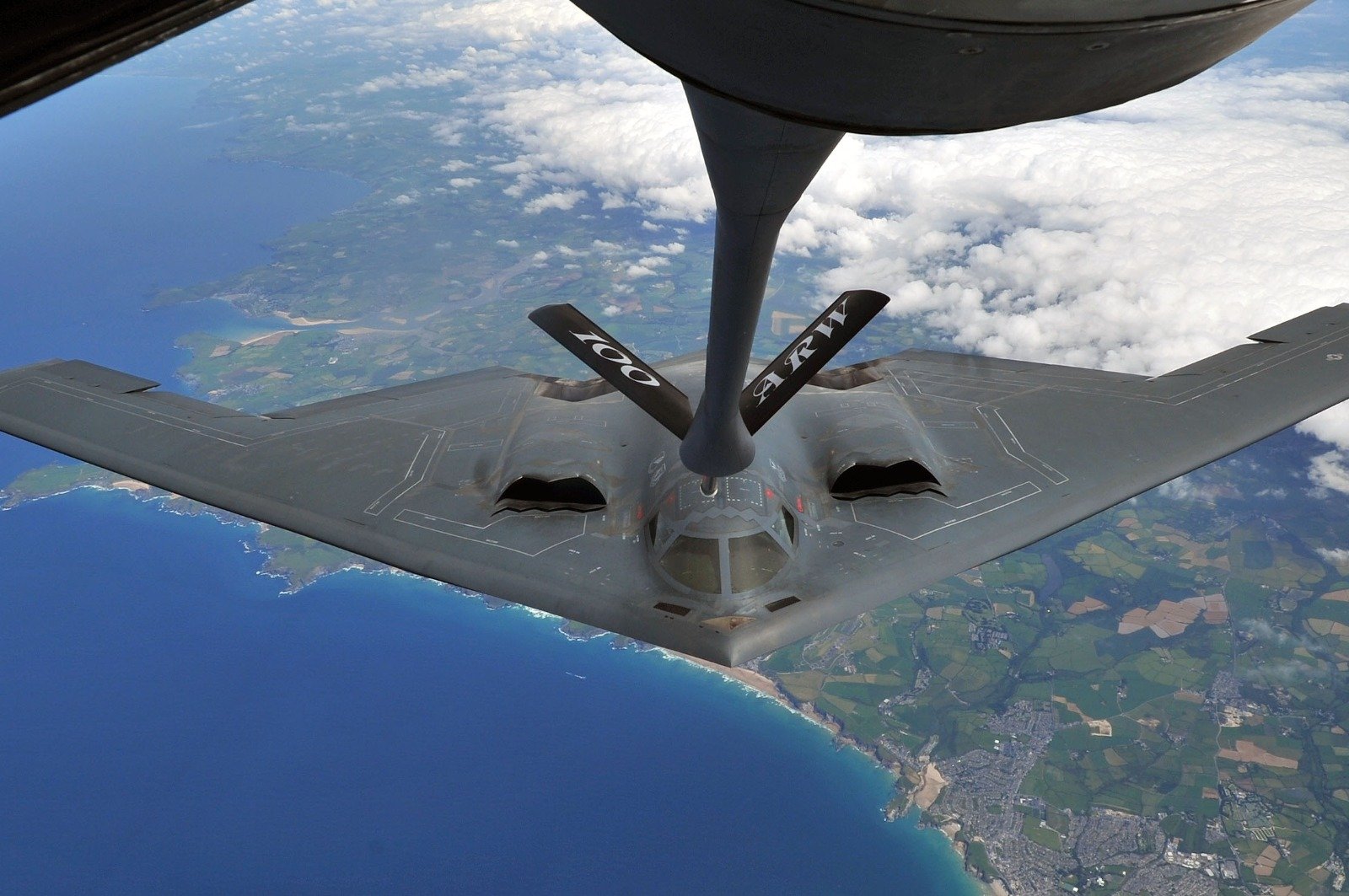
As explained in a previous article on the mishap “the investigation found out that the root cause of the accident was moisture in the air-data sensors: heavy, lashing rains caused moisture to enter skin-flush air-data sensors that gave wrong inputs to the flight-control computers. The combination of slow lift-off speed and the extreme angle of attack resulted in an unrecoverable stall, yaw, and descent.
Here’s what the U.S. Air Force website reported after the report was released:
Moisture in the aircraft’s Port Transducer Units during air data calibration distorted the information in the bomber’s air data system, causing the flight control computers to calculate an inaccurate airspeed and a negative angle of attack upon takeoff. According to the report, this caused an, “uncommanded 30 degree nose-high pitch-up on takeoff, causing the aircraft to stall and its subsequent crash.”
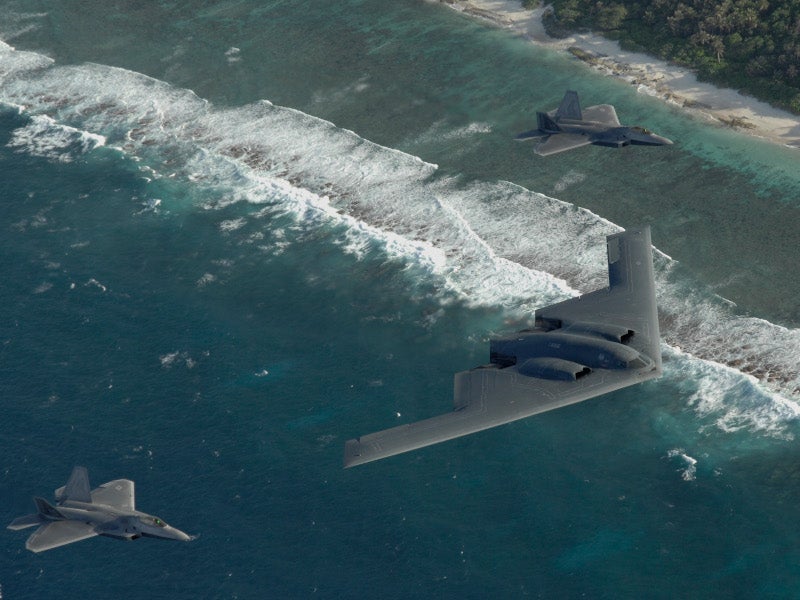
Moisture in the PTUs, inaccurate airspeed, a negative AOA calculation and low altitude/low airspeed are substantially contributing factors in this mishap. Another substantially contributing factor was the ineffective communication of critical information regarding a suggested technique of turning on pitot heat in order to remove moisture from the PTUs prior to performing an air data calibration.
Noteworthy, along with the air data ports, the photograph shows something else. On the right hand side of the photo (left wing), a circular window is also visibile: that window covers the aircraft’s astro-tracking system. All about it can be found in this article by our friend Tyler Rogoway at The War Zone.

By the way, there are plenty of peculiar systems in the B-2. For instance, do you remember the Spirit’s rotating dorsal receptacle? Once AAR (Air-to-Air Refueling) is completed, the Spirit rotates the fuel intake required to connect with the tanker’s flying boom so that it does not become RCS “hotspot” rendering the B-2 less than completely stealthy.
Soucre: theaviationist.com





